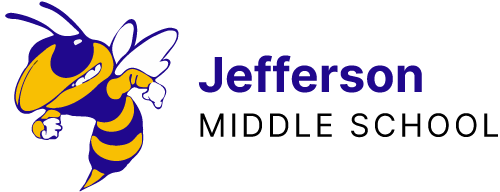Purpose of Assessment
Assessment is instrumental to learning. It helps give students feedback on the learning process. Assessment helps inform, enhance and modify the teaching process. It supports development of the whole child. Great assessments promote a positive student attitude toward learning by utilizing creative and critical thinking.
Assessment Criteria
As an IB school, every teacher must assess specific subject group criteria listed below using a variety of summative assessments at least twice during the year. These criteria represent the use of knowledge, understanding and skills which must be taught. They are summarized below and the complete MYP standards and strands year 1 (6th grade) to year 3 (8th grade) are posted here: IB MYP Assessment Objectives and Strands, IB Objetivos – En Espanol, أهداف البكالوريا الدولية – اللغة العربية.

Summative Assessment
 Assessment of learning (it determines grades). These are performances or tasks directly linked to the statement of inquiry that demonstrate student understanding of IB subject criteria. They are based on the theory that understanding is not something we have—like a set of facts we possess—but rather is something we can do. The MYP uses the term “performance” in its widest sense to describe all forms of assessment. Types of summative assessments may include: Compositions, creation of solutions to problems or products, essays, and examinations.
Assessment of learning (it determines grades). These are performances or tasks directly linked to the statement of inquiry that demonstrate student understanding of IB subject criteria. They are based on the theory that understanding is not something we have—like a set of facts we possess—but rather is something we can do. The MYP uses the term “performance” in its widest sense to describe all forms of assessment. Types of summative assessments may include: Compositions, creation of solutions to problems or products, essays, and examinations.
Formative Assessment
 Assessment for learning (not for grading). This should be done before and during learning. Effective formative assessment can help personalize learning and provide opportunities for students to refine or rehearse performances for summative assessments. Peer and self-assessment are powerful tools for learning. These formative assessments, checks for understanding, should take place every class period. Examples of formative assessments include: Google forms, 1-sentence summary, and exit tickets.
Assessment for learning (not for grading). This should be done before and during learning. Effective formative assessment can help personalize learning and provide opportunities for students to refine or rehearse performances for summative assessments. Peer and self-assessment are powerful tools for learning. These formative assessments, checks for understanding, should take place every class period. Examples of formative assessments include: Google forms, 1-sentence summary, and exit tickets.
Differentiation
 Modifying teaching strategies to meet diverse learning needs. We apply these principles: 1) Affirming identity and building self-esteem, 2) Valuing prior-knowledge, 3) Scaffolding (supports), 4) Extending learning. Differentiate in terms of content, process and product. By content: What should students know? By process: What activities will help students make sense of the knowledge, skills and understanding? By product: What tasks will provide evidence of what the student knows, understands and is able to do?
Modifying teaching strategies to meet diverse learning needs. We apply these principles: 1) Affirming identity and building self-esteem, 2) Valuing prior-knowledge, 3) Scaffolding (supports), 4) Extending learning. Differentiate in terms of content, process and product. By content: What should students know? By process: What activities will help students make sense of the knowledge, skills and understanding? By product: What tasks will provide evidence of what the student knows, understands and is able to do?
Task-Specific Clarifications
 MYP publishes assessment criteria in rubric form that is holistic, in that they offer general, qualitative value statements about student achievement. Furthermore, these rubrics area created with specific command terms that have the same definitions across subjects and grade levels, the command terms are posted here. Task-specific clarifications require teachers to redraft the value statements in a rubric in terms of specific assessments. It should be completed at the beginning of each unit.
MYP publishes assessment criteria in rubric form that is holistic, in that they offer general, qualitative value statements about student achievement. Furthermore, these rubrics area created with specific command terms that have the same definitions across subjects and grade levels, the command terms are posted here. Task-specific clarifications require teachers to redraft the value statements in a rubric in terms of specific assessments. It should be completed at the beginning of each unit.
Determining Grades
MYP reports of student achievement should communicate the student’s achievement level for each assessment criteria. It allows students and parents to know how students are performing on each objective. Teachers analyze student summative scores paying attention to patterns in the data, including increasing performance, consistency and mitigating circumstances to determine the student’s final achievement level. In the two examples below, determining a final score by looking at patterns gives a better sense of what a student understands at the end of the grading period rather than simply averaging. Since formatives don’t count toward the final grade, students aren’t penalized for not scoring well while they are learning.

 Contact
Contact  Calendars
Calendars Careers
Careers Engage
Engage  District
District
